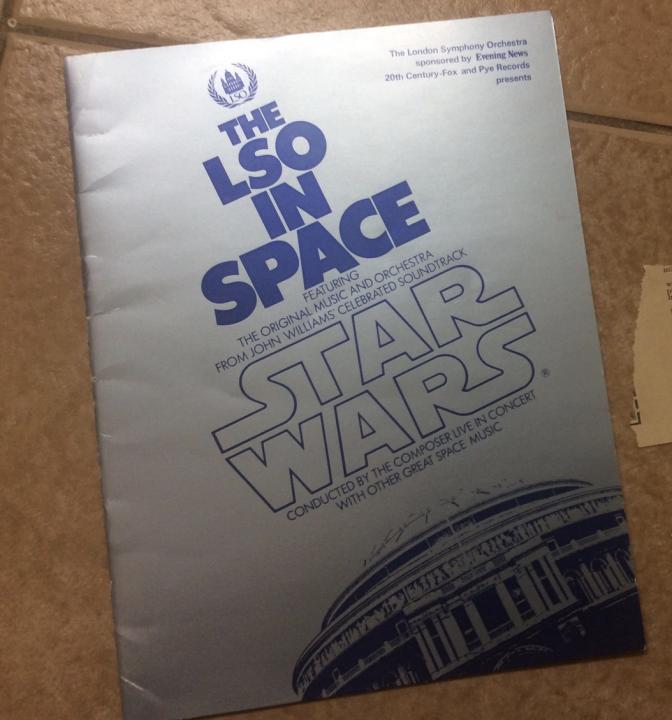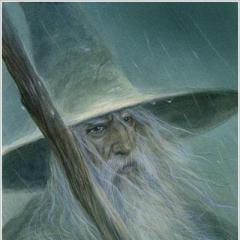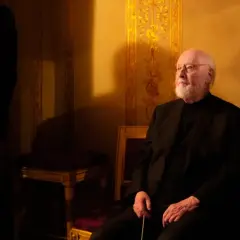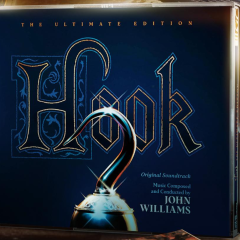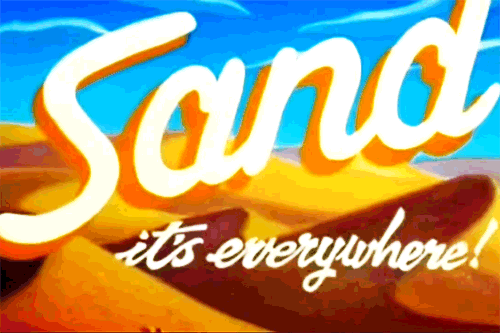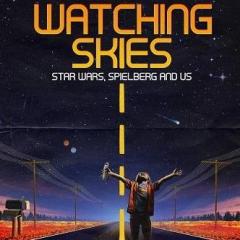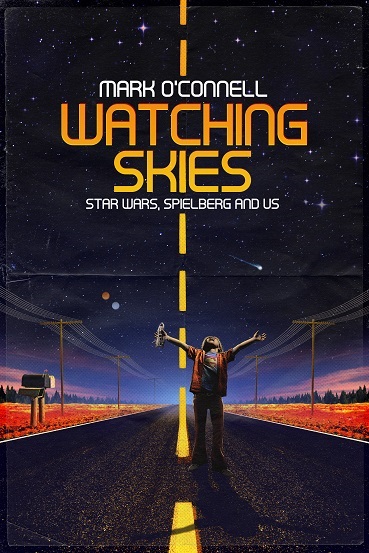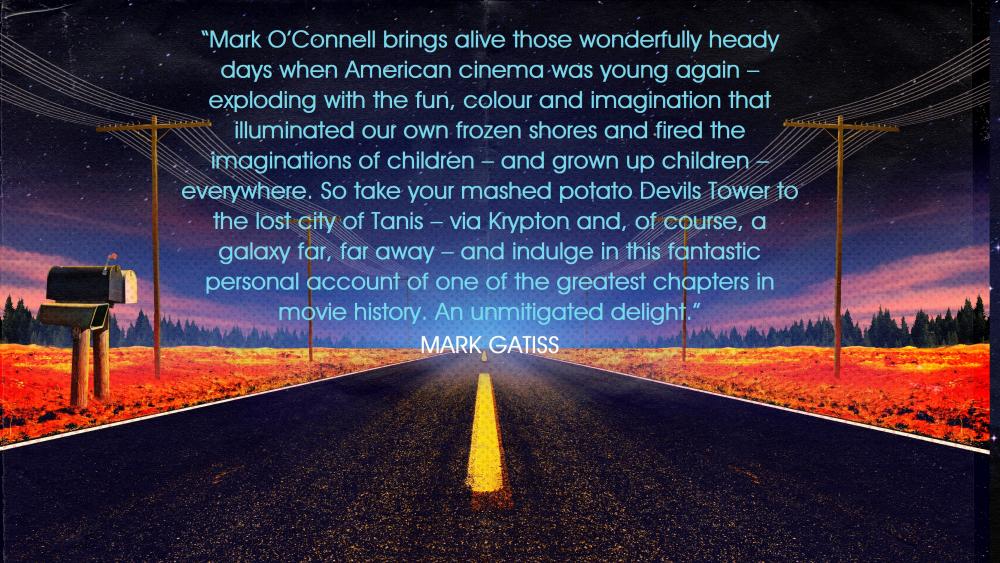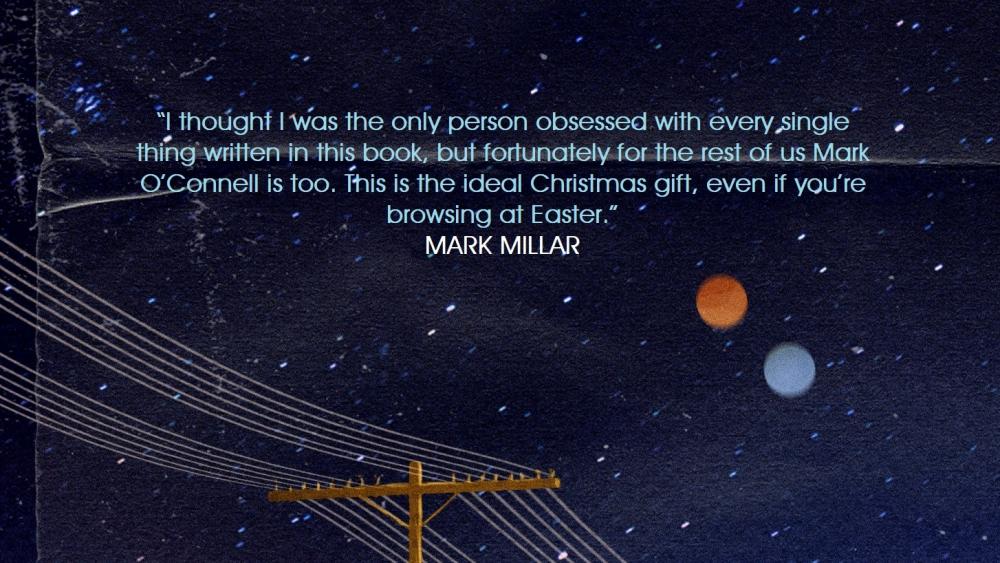Search the Community
Showing results for tags 'John Williams'.
-
If MM gets to produce remastered and expanded soundtrack albums of all Indy films, what would he have to improve on the earlier releases in order to end up with the definitive presentations?
- 138 replies
-
- Mike Matessino
- John Williams
-
(and 1 more)
Tagged with:
-
PR: BSX Presents 'Titanic: An Epic Musical Voyage'
buysoundtrax posted a topic in General Discussion
FOR IMMEDIATE RELEASE BUYSOUNDTRAX RECORDS REMEMBERS THE TITANIC WITH AN EPIC MUSICAL VOYAGE Featuring Music from Titanic (Film), Raise the Titanic, Titanic (Musical) and S.O.S. Titanic http://buysoundtrax....epmuvomuby.html SRP: $15.95 LISTEN TO A SOUNDCLIPS FROM the score for TITANIC: AN EPIC MUSICAL VOYAGE My Heart Will Go On (Vocal Version) - Titanic (1997) http://buysound.webjedi.net/Titanic_BSX/1%20My%20Heart%20Will%20Go%20On%20-%20Vocal.mp3 Theme from SOS TITANIC - S.O.S. Titanic (1979) http://buysound.webjedi.net/Titanic_BSX/10_SOS_Titanic.mp3 Third Class Steerage - Titanic (1997) http://buysound.webjedi.net/Titanic_BSX/4_Third_Class_Steerage.mp3 BUYSOUNDTRAX Records is proud to announce the release of TITANIC: AN EPIC MUSICAL VOYAGE, performed by the White Star Chamber Orchestra and Chorus Conducted by Dan Redfeld. In the 100 years since the famed RMS Titanic hit an iceberg and plunged into the ocean, it has been celebrated on stage, television and in film. This collection of new recordings, which features extensive liner notes by Randall Larson, celebrates the music from these productions. TITANIC: AN EPIC MUSICAL VOYAGE will be available digitally on April 3rd, and CDs begin shipping on April 10, 2012, the 100th anniversary of the maiden voyage of the RMS Titanic. The heart of this musical voyage is the music composed by James Horner for the Academy Award winning film TITANIC. In addition to a number of tracks of the score from the film, singer c performs “My Heart Will Go On.” Also featured on this album are tracks from S.O.S. TITANIC (Howard Blake), RAISE THE TITANIC (John Barry), “The Titanic Trot” from TV’s THE TIME TUNNEL (John Williams), and selections from Maury Yeston’s Tony winning musical TITANIC. Rounding out this recording are two historical tracks, an arrangement of traditional Irish Music (by Joohyun Park) and “Nearer, My God, To Thee”, the hymn reportedly performed by the Titanic’s dance band as the ship went down. “We’ve taken these film scores and reimagined them into a different kind of compilation album,” said the album’s producer, Ford A. Thaxton. “This is a very different take on it. We wanted to do something that would have a timeless quality to it.” The label turned to Dan Redfeld to launch this musical voyage. Redfeld has had a lifelong interest in the Titanic. “I’m not sure I know what the attraction was,” he said. “It’s the fact that it was the grandest ship in the world and it hits an iceberg and sinks and 1500 people go down. It's the whole series of little events that lead to this massive catastrophe. It’s the people who stayed at their posts, particularly the stokers under the ship who kept the ship lit and the band playing on until the last moments. I don't know if that kind of character exists anymore. There is just such incredible drama about it and I think it's what gets to people about it. The epic-ness of the disaster, for a composer, evokes passionate music.” Dan Redfeld is a classically trained concert pianist and composer/conductor who studied at Boston’s New England Conservatory. While many of his fellow students were embracing modernistic, atonal music, Redfeld was more interested in tonal, neo-romantic music. He has written music for stage, concert performance and screen. The premiere of his latest opus, Travels for Piano Quartet, was performed by Central4, a chamber group that named him Composer-In-Residence. Redfeld is currently musical directing and conducting Eli Villanueva’s opera, The White Bird of Poston, for the Los Angeles Opera. TITANIC: AN EPIC MUSICAL VOYAGE will be available digitally on April 3rd, and CDs begin shipping on April 10, 2012, the 100th anniversary of the maiden voyage of the RMS Titanic. SPECIAL NOTE: The first 100 copies purchased through BUYSOUNDTRAX.COM website will be autographed by Music Director Dan Redfeld and vocalist Zoë Poledouris Roché. 1. My Heart Will Go On (Vocal Version) - Titanic (1997) (5:06) Music by James Horner / Lyrics by WIll Jennings / vocals by Zoë Poledouris Roché 2. Never An Absolution/Unable to Stay, Unwilling to Leave - Titanic (1997) (5:33) Music by James Horner / vocals by Kristi Holden 3. Southampton/Take Her to Sea, Mr. Murdoch - Titanic (1997) (5:07) Music by James Horner / vocals by Kristi Holden 4. Third Class Steerage - Titanic (1997) (3:47) Traditional (arranged by Joohyun Park) 5. Rose - Titanic (1997) (2:56) Music By James Horner / vocals by Kristi Holden 6. Titanic Trot - Time Tunnel Pilot (1966) (Rendezvous with Yesterday) (3:47) Music by John Williams 7. The Portrait (Piano Sketch) - Titanic (1997) (4:45) Music By James Horner / solo piano by Dan Redfeld 8. Doing the Latest Rag - Titanic: A New Musical (1997) (3:24) Music and Lyrics by Maury Yeston vocals by Tom Schmid, Eric Bradley, Scott Dicken, Fletcher Sheridan, Chorus 9. No Moon - Titanic: A New Musical (1997) (3:02) Music and Lyrics by Maury Yeston / vocals by Michael Lichtenauer 10. Theme from SOS TITANIC - S.O.S. Titanic (1979) (2:33) Music By Howard Blake 11. We'll Meet Tomorrow - Titanic: A New Musical (1997) (2:45) Music and Lyrics by Maury Yeston / vocals by Greg Whipple, Christina Harding. Fletcher Sheridan, Michael Lichtenauer, Chorus 12. Nearer, My God, to Thee (5:46) Traditional (arranged by Steven Ganci) 13. Suite from Raise the Titanic - Raise The Titanic (1980) (6:18) Music By John Barry 14. Hymn to the Sea - Titanic (1997) (6:25) Music by James Horner / vocals by Kristi Holden 15. My Heart Will Go On (Vocalise) Titanic (1997) (5:51) Music by James Horner / Vocals by Kristi Holden Total Time: 67:00- 12 replies
-
- Howard Blake
- John Barry
-
(and 2 more)
Tagged with:
-
So I was on the BMI repertoire, just looking through John Williams' page, mainly to check for any TFA cues, when I came upon a cue I had not seen before, credited to John Williams called "Death of Ki Adi". So obviously Ki-Adi-Mundi is a character in Episode 3 that was killed during the order 66 scene. Does this mean that there was music specifically for his death, or that BMI made a mistake somehow, or there was a character in another movie with that name? I'm kind of confused right now. Take a look for yourself; it's on page 11... http://repertoire.bmi.com/PublisherCatalog.asp?fromrow=251&torow=275&keyname=BANTHA%20MUSIC&querytype=PUBWORKS&keyid=17754&page=11&blnWriter=True&blnPublisher=True&blnArtist=True&affiliation=&cae=&term= EDIT: On a side, note, the only cue we don't have from TFA that I could find was a cue called "Bring Her to Me". Not sure if it's referring to the film mix, or an unused cue.
-
This morning I listened to a 2014 recording by the BBC Concert Orchestra on Spotify. I don't think it correspond to a physical album. The playing is good, but it contains a way too much echo for me, but the thing is they recorded the End Titles from The Empire Strikes Back. Well, I think it's worth of mention. Except the Gerhardt version, I don't remember any other re-recording of this piece. Please feel free to share your own discoveries!
- 130 replies
-
- Re-recordings
- John Williams
-
(and 2 more)
Tagged with:
-
Hello fellow John Williams and Star Wars fans alike! Was wondering if anyone would be in possession of (and if so, willing to sell) the following programme from John Williams’ live concert performance at the Royal Albert Hall in 1978? Thank you in advance! May The Force Be With You!
- 3 replies
-
- London Symphony Orchestra
- concert
- (and 5 more)
-
I am!
-
Here is my analysis of the soundtrack album that appears on the main page as well and in addition a thematic breakdown with track times. Comments, observations and corrections are as welcome as always: War Horse A review and an analysis of the Original Soundtrack Album By Mikko Ojala (Incanus) The upcoming film War Horse is the 28th collaboration between director Steven Spielberg and composer John Williams. The movie is based on a popular children’s novel by author, poet and playwright Michael Morpurgo and tells of a young English boy Albert and his extraordinary friendship with his horse Joey, set in the times of WW I. It is a story of courage, loyalty and friendship told through the eyes of a horse. John Williams’ score for the film is a beautiful and powerful achievement and as Steven Spielberg himself in the liner notes of the album says, Williams seems indeed be blessed by earth and heaven both with continuing inspiration and talent. And if this CD is anything to go by we can still be the beneficiaries of this inspiration through the War Horse soundtrack album. Williams has once again created a beautiful tapestry of music, diverse yet feeling like it forms a coherent whole, thematic ideas sharing often common musical base. And because of this the score feels like an world unto itself. The composer’s self professed love for English music is very evident in this score and indeed the first stylistic influence that came to my mind when hearing this music was Ralph Vaughan Williams, maestro who is almost synonymous with English music and whose musical style Williams seems to channel through his own sensibilities very strongly, never resorting to pastiché but rather evocation and allusion. English folk music seems another inspiration, much as it was to Vaughan Williams, the lilting melodies and progressions dancing from Williams’ pen with fluid ease. And then there are the somewhat maligned Celtic music influences, the detractors indignant that such musical ideas should be present in music that should depict Englishness, since Celtic music apparently shares very few commonalities with English music but in the score, to the layman’s ears, this Celtic sound enhances the time and place quite strongly, lending the music further lyricism and warmth. So all the above Williams mixes with his own unmistakable voice resulting in a score full of powerful emotional music that has also quiet majesty and scope, conjuring up the natural world, English countryside and rustic life style in a sweeping lyrical way. And working as a counterweight to this is the often intense music for the war, unrelenting rhythms and harsh orchestral writing driving home the ugliness of battle. The elegaic writing of the war scenes is yet again classic Williams, somber yet moving, subtle nuances often carrying a lot of emotional weight, even the most rousing battle material tinged always with mournful tones of the tragedies of war. An interesting phenomenon with this score is that it feels extremely familiar, the traits and stylings of Williams’ writing very evident and I could cite several scores from his oeuvre this score might bring to mind yet somehow there is a strong emotional charge to every aspect of it, the string elegies, the dramatic war music, the pastoral writing, humourous music, intimate dramatic writing and folk melodies so that they feel fresh and new, ready to be discovered yet again. It sounds like there was true inspiration at work in the score for War Horse. The recording is as excellent as in his previous score The Adventures of Tintin, bringing out the orchestral depth and colour, nuances and the soloists with equal wonderful vibrancy. As with many of Williams’ dramatic scores instrumental solos carry an important role in the music. Highlighted are in particular the flute and trumpet that reflect the different sides of the story, the flute usually speaking to the bucolic country life and peace, the trumpet to the war, both the nobility and the sorrow. Oboe and cor anglais lend themselves also to the reflections of the natural world and English countryside and French horns’ tones give a sheen of afternoon sun and familial warmth but also nobility to the story. The Themes As I have not seen the film yet my thematic speculation is exactly that, more of my own impression of what these musical ideas seem to represent dramatically to me on the album. Also similarly all guesses concerning the dramaturgy of the music are my own based on what I have heard about the film and the music. War Horse contains a whole plethora of thematic ideas, reflecting quite clearly Williams’ own reported enthusiasm for the film. The English countryside and Narracott family, Joey and Albert among others all receive their own themes in this score. 1. War Horse Main Theme (Bonding Theme): A warm, majestic, rising and falling melody representing the bond between Albert and Joey that carries a strong emotional charge. Initially Williams uses this theme as the boy and the horse form their bond as they work and live together on the Narracott farm but by the end of the score it becomes a noble and poignant expression of their mutual affection, a heart warming theme for true friendship. The warm, rising Bonding theme receives a complementary melodic phrase later in the story and on the album which could be called 2. Friendship Theme: This theme sounds like a natural continuation of the Bonding Theme, almost like it is completing the melodic phrase started the Bonding Theme. A noble, directly emotional, hymn like piece that speaks perhaps to the deepened friendship Joey has with Albert but also to friendships the horse has formed during his journeys. Williams conjures a homely feel of safety and love with this theme although there is a subtle undercurrent of yearning in it as well. 3. Discovery Theme : An ethereal, mysterious Celtic flavoured melody which perhaps depicts the first encounter between Albert and Joey and appears again towards the end of the album. 4. Dartmoor Theme: An English sounding melody for the locale of Dartmoor of full lush orchestral writing, evoking all at once green rolling hills and other pastoral landscapes bathed by perpetual sunlight. Closest cousin to this music in Williams’ own repertoire would be the Irish evocations in Far and Away and his expansive sounding Americana writing for numerous movies. 5. Nature Theme: This is a Celtic tinged melody also infused with the spirit of Vaughan Williams and is often performed by solo flute and reverent strings. The theme seems to speak of the natural world and its beauty, its progressions stately, slow and majestic. 6. Narracotts Theme (Farm Work): A jauntier folk song melody full of lilting English stylings that accompanies the Narracotts and their work on the farm. Reaches its most powerful rendition during the track called Plowing. 7. Playful Horse: Another English folk music evocation, a playful and almost jig-like theme for the humour and lighter moments of the story. 8. War Theme: A lonely trumpet call, reminiscent of Williams’ similar work in JFK, Born on the Fourth of July and Amistad, this theme represents what I think is the actual war horse aspect of the main character, echoing like a bugle on the field of battle over a snare drum cadence, fateful,denoting also the central element of the story, war, noble and mournful at the same time. 9. Joey’s New Friends Theme: Another lyrical thematic idea for friends Joey meets during his journeys. A peaceful, innocent and haunting, this idea appears only twice on the album. Track-by-track analysis: 1. Dartmoor, 1912 The score opens on clear solo flute intoning the Nature Theme joined by warm and stately strings, full of Celtic lilt evoking majesty of the land itself. The flute continues developing the theme, clear and pure sound speaking to the serene country landscapes and natural world’s strength. An accordion appears to offer some rustic commentary establishing the time and place perhaps but soon the sprightly rhythmic tugging of double basses and celli surges forward and the folk song-like Narracotts Theme is heard on flutes with woodwind doubling. Trumpet section supports the melody with delightfully busy staccato motif while the strings continue their own rhythmic idea, Williams providing what sounds like travel music until at 2:10 the Dartmoor Theme bursts into view with full ensemble presenting this sunny lyrical idea in all its glory. After a brief interlude of Vaughan Williamsian string work the traveling variation of Narracotts Theme continues and for the second time climbs into a statement of the Dartmoor theme. This piece is like an excellent overture, giving us a taste of things to come and I love how Williams conjures the feel and colours of English countryside so strongly in his music, the score truly evocative here. Closest equivalent in WIlliams’ catalogue but only with strong Americana feel would be the opening music from Patriot. 2. The Auction A swaying expectant string figure is soon joined by a 7-note thematic idea, an early version of the Playful Horse Theme, on clarinet, bassoon and flutes that dances forth almost mischievously. Williams adds more instruments in and passes the melody around the orchestra, providing steady development of the motif along the way. The whole piece has a feel of growing anticipation as it is underscoring an auction and orchestrations finally grow heavier as some moment of decision is reached. Maestro is building up suspense but does it with great humour and distinctive orchestration and melodies which I think he does better than anyone, raising the piece from being a bit of underscore to being an active part of the storytelling, the music not even needing the images to let you know different little twists and turns that take place in the story. At 1:56 a new swaying harp figure and a melody on clarinets, flutes and horns appears obviously denoting that something significant is again happening. The strings take up the swaying idea subtly raising their voice until at 2:52 a variation on the Nature Theme is heard, the lilting theme further elaborated by horns, a sense of probing and curiosity on high strings and flutes entering just before harp finishes the piece tentatively. 3. Bringing Joey Home, and Bonding Rhythmic low strings, celli and doublebasses, present a jaunty little march that is accented by woodwinds, creating at once a sense of determination and comedy, the little melody developed in the low strings as it progresses forward with stops and starts until at 1 minute mark solo flute appears, performing the Dartmoor Theme in dreamy rendition. This section is repeated, the jaunty theme and the Dartmoor Themeworking in almost question and answer fashion, the little march getting weightier now joined by violins but then over a bass pedal sound another new theme appears, the Discovery Theme on solo flute, rising ethereally, beautifully lyrical and haunting, underscoring most likely the first close encounter of the boy and the horse. Oboe answers the theme with a warm melody of its own, the writing classic Williams. This has to be despite scant few appearances one of my favourite themes of this score so full of wonderful thematic ideas. There is youth, fragility and vulnerability but also dreamy ethereal quality to the music that is enchanting. It could well describe a child’s fascination with an animal. After the oboe solo a nostalgic clarinet follows suite and flows into the first statement of the Bonding Theme on warm harp, strings and horns speaking of the importance of the moment, the first bond between the two, and clarinet returns to soothingly end the theme. At 3:52 a rather skittish and bumbling oboe line appears, followed around by woodwinds, pizzicati strings and basses making rhythmic tugs, clarinet wandering into a humorous finish. This short piece sounds like Williams in his trademark style scoring the young horse’s clumsy movements with light good natured humour. 4. Learning the Call Pastoral strings and harp and dreamy clarinet offer a brief moment of bucolic colour until another swaying string idea jumps into a reading of the Bonding Theme on warm horns with a delightful swirling string counterpoint. Rhythmic excited tugging in the string section and bubbling woodwinds lead the orchestra into a development of the Playful Horse Theme previously heard on track 2, which dances forth like an English folk song, the orchestrations passing the melody around the different instrumental groupings, the double basses providing lively momentum to the music. Vertical rhythmic string figures that were heard on the opening track and the same busy trumpet accompaniment are also reprised here as the Narracotts Theme appears, Williams combining it here with Playful Horse Theme, both themes dancing briefly around each other. 5. Seeding, and Horse vs. Car Serene strings, clarinet and harp rise and fall in peaceful luminous setting, the string section finally performing the Nature Theme full of warmth, majesty and reverence. Clarinet and solo oboe over celli sings out a pastoral melody of Celtic flavour that sounds like it is build on theNature Theme’s contours, both instruments ruminating peacefully in almost nostalgic fashion, flute and horns sounding for a brief interlude. Another oboe solo which to me sounds very close to Williams’ nature and tree inspired concert compositions melts suddenly into the string section taking up again the boisterous rhythmic motif from track 1 and 4 that lifts the orchestra into a joyous burst of the Dartmoor Theme, the galloping of a horse most vividly illustrated by the music, the exhilaration of race now reflected first in the Playful Horse Theme and then in theNarracotts Theme underscoring both Joey and Albert, the orchestra dashing into a brilliant finale that recalls Williams classic horse riding scherzos from the Cowboys and The Reivers Suite. 6. Plowing Despite the rather rustic title this track is truly a standout piece. The Narracotts Theme on clarinets over a deep contrabassoon and doublebass rhythm starts a long development of the thematic idea, the insistent motion of the strings conjuring up the steady, determined nature of the farm work. Williams starts to embellish the melody and the rhythm with different instruments and slowly but surely it grows, ebbing and flowing until 1:20 when a new noble theme appears, seemingly celebrating the honest work and country life that builds into a grand statement of the Bonding Theme, flute over the up-and-down swaying strings, Narracotts Theme appearing again now mingled with the snatches of the Bonding Theme, the Dartmoor Theme fleetingly passing under the two themes until the rhythmic motif of the basses returns with strong readings of the Narracotts Theme on woodwinds and horns that opens up into the most powerful and majestic reading of theBonding Theme on the album at 3:33 the melody rising on proud resounding horns with the accompanying string figures reaching higher and higher and finally united with the Dartmoor Theme in a pure and unabashed celebration of countryside and simple life and the bond that is forming between the boy and his horse. After the majesty of the thematic statements has faded into near silence solo flute’s crystal clear voice playing what sounds like a ruminating variation on the Nature Theme and warm horn and string textures brings this orchestral set piece to a truly satisfying conclusion. This is without a doubt one of the most satisfying tracks on the entire album. Williams’ build-up throughout the piece is masterful, the expansive sound he conjures truly a celebration of nature in musical form. The full statement of the Bonding Theme (this version is the one heard also in the trailers) is a truly classic Williams moment of spine tingling grandeur and warm humanity, showing once again how he knows how to capture the human heart and aspirations in his music. 7. Ruined Crop, and Going to War Mournful duet for oboe and bassoon seems to depict quiet loss and resignation, almost elegaic strings adding to the emotionality of the piece. The duet and the string theme is reprised but soon taken over by a fateful sounding figure in the string section that mounts in strength with murmuring brass appearing underneath, underscoring the direness of the situation. A new section begins with a nostalgic and emotional reading of the Bonding Theme but is soon supplanted by a new theme for Joey, as he goes to war, Williams presenting almost formally a solo trumpet idea of the War Theme that seems to speak both for the war and men in it but also for Joey himself. The tones are noble and clear but the melody carries with it a mournful fatality and somberness as it echoes over a snare drum cadence. As said above in the thematic overview the theme is one in a long tradition of Williams’ trumpet themes for war and military, a dichotomy of heroism and loss. 8. The Charge and Capture The previous track segues to this one without pause. High strings support a clear trumpet call reminiscent of the War Theme in its style almost like a bugle before the battle, carrying with it a steely resolve. Snare drum and whirring, buzzing string patterns emerge and start a wild nervous gallop, deep dark brass making exclamations undernearth, rhythmic strings growing insistenly louder with dissonant brass choirs from both sides of the orchestra screaming, promising carnage. This is war at its most brutal. The orchestral chaos grows and grows, finally stripped down to the galloping rhythm and then only to sorrowful strings, the War Theme echoing over the bleak soundscape on solo trumpet. Reverently sad brass and string elegy slowly starts in the orchestra, the melody trying to continue but soon subsides exhausted. 9. The Desertion Similarly gloomy high strings and low woodwinds that accompanied the previous track open this one, the disheartening tragedy of war clear in their tones until a fast rhythmic figure kindles in the string section and begins a breathless race through the orchestra, a repeating angular motif emerging through the writing, augmented by growing brass providing rapid staccato figures, cymbals making tight bursts. This is not joyous music for a gallop in the sun, this is a head long flight full of terror and panic, Joey trying to escape the war. And slowly the escape music dies down but encounters the grieving sounds of strings, elegaic once more full of deep sadness. You can’t run away from war. It is everywhere. Noteworthy here is that Williams creates the kinetic pull of the piece through the use of string section and brass alone, percussion, so common in most modern scores as the providers of momentum playing a minimal part which is a wonderful change of pace and a smart move from Williams. 10. Joey’s New Friends A calm, ethereal flute solo comes to offer brief solace from the horrors of war, joined by a second flute, dueting quietly, strings accompanying subtly the melody representing Joey’s New Friends, warm and comforting. Humorously optimistic and determined horn melody with a clarinet bubbling in the background seems to indicate a positive turn in the events. Soon another new melody dances forth on woodwinds, harp and happy strings, quick, dexterous and light, alternating with rather comedic interludes for brass and woodwinds, painting a light and bright hued picture of momentary respite from fear and toil. An excellent piece of music offering some needed humour and lightness to the proceedings in the middle of the heavier and dramatic war tracks. Reminds me of some of the lyrical lighter moment in Terminal score and curiously enough Heartbeeps. 11. Pulling the Cannon Heavy rhythm on double basses indicates danger, toil, hardship and struggle, the music continually growing around the rhythm, pacing slowly but inexorably forward, the tugging of the menacing strings leading into a noble reading of the War Theme again on the signature sound of the theme, a solo trumpet. From this grows a dramatic, tragic piece for the whole orchestra, different sections creating a sense of mounting struggle. Fatal brass, strings and percussion and low end piano do battle with each other, snare drum providing military pacing amidst the orchestral war. At 2:37 the battle subsides leaving in its wake a touching string elegy where glowing strings perform with grace and subtlety, even their smallest gestures heartbreaking. 12. The Death of Topthorn The tone of the previous cue continues here, the tragedy and gentle sorrow mixing into one in another string led piece. Solo clarinet comes in midway through, subtly poignant, the strings taking up its notes and rising slowly into a full orchestra crescendo of heart breaking proportions. 13. No Man’s Land Cold high string tones screetch and unsettle, harp wandering ghostly amidst their dissonant textures for a good while like over fields of the dead. At 1:52 the orchestra bursts into action with a resounding piano and double bass crash, snare drum and racing string figures providing pace for another race, this time perhaps for freedom. Woodwinds and brass join the performance, this time the percussion adding their weight to the escape, the brass tones heroic, victorious and rousing, the War Theme appearing in the middle of the charge that builds towards a dramatic crescendo of furiously fast orchestral forces. The momentum is finally stopped by deeply violent string figures and pouding rumbles of a grand piano that slowly die down into silence. 14. The Reunion The music opens with the Discovery theme as ethereal as we heard for the first time on track 3, but here played delicately on piano and then the strings take up the Bonding Theme in a wonderfully gentle fashion the melody extended here by Maestro with a poignant passage for strings, flute subtly appearing under the theme’s texture. Solo oboe and warm dreamy horns propel us to another reading of the Bonding Theme rich with noble brass writing, string jumping higher with their accompanying figures, truly emotional in their restrained performance, Williams infusing them with feeling of much grander reading of the thematic material. The Friendship Theme, a perfect continuation of theBonding Theme, appears if to announce us that all is well, the soothing, yearning tones here fully at peace. This is for me the best piece of the entire score, summing up the emotional strength of the main thematic ideas and bringing them around a full circle. The restrained yet highly powerful performance has an air of serene peace and fulfillment without the music becoming too saccharine or maudlin. A perfect balance. 15. Remembering Emilie, and Finale The Bonding Theme is heard on flutes this time, the sound warm and peaceful, continuing the tone of the previous track. Soothing strings and horns create a homely and comforting mood when at 1:19 solo flute appears from that texture, playing the Joey’s New Friends theme, tender and delicate. Harp and strings continue, horns quoting the Bonding Theme’s opening before solo piano gives a lyrical and emotionally direct statement of the Friendship Theme, the instrument all at once nostalgic and homely, poignancy of the story fully captured in the melody’s contours. This is further enhanced as the strings take up the Friendship Theme next rising into an emotional peak of the piece, repeating theBonding Theme on horns with the rising strings infused with the sense of fulfillment. And as the piece draws to a close Williams makes a wonderful dramatic gesture by having the War Theme appear on clear solo trumpet with flutes quoting the Bonding Theme’s rising and falling figures quietly underneath, both aspects of Joey coming together in the end. 16. The Homecoming For the film’s end credits Williams has written one of his classic extended suites, gathering up all the major themes of the score and developing them in different ways. Featured are The Playful Horse Theme, The Nature Theme, Dartmoor Theme, The Narracotts Theme and finally the Bonding and Friendship Theme. The music opens with the Narracotts Theme on solo flute, which is featured throughout the suite and then the music quickly dances forward to a variation of the Playful Horse Theme with its rhythmic double bass figure, the composer developing the theme beyond what we have just heard on the album, the idea becoming almost a sprightly jig for a symphony orchestra. At 2:21 solo returnsflute to perform the Celtic flavouredNature’s Theme which is then taken up by the strings, the orchestra exploring the majestic slow theme until it joins aptly to The Dartmoor theme that is intoned on lovely solo flute over warm strings, alternating with the Narracotts Theme. A brief boisterous strings interlude with shades of the Playful Horse Theme then flows into a lovely combination of the Bonding Theme and the Friendship Theme, now singing beautifully with the help of the entire string section, making a final truly emotional statement of Albert’s and Joey’s friendship. But quite fitting the music ends where it started, the Nature Theme, solo flute carrying in its ancient and revenrent tones the piece into a beautiful, serene finish. The soundtrack album feels like a well paced journey, a coherent dramatic arc from the bucolic country life to the horrors of war and back again, the final few tracks embracing friendship, peace and sense of closure. All the large and small instrumental touches reflecting the story, its majesty, humanity, playfulness, the brutal futility of war, friendship, the beauty of earth itself come together to form a beautiful whole, unfolding in just 65 minutes, a perfect length presentation of the music. For me this score represents all that is best in John Williams’ music: the thematic brilliance, the mastery of orchestral colours and orchestration and the inherent emotionality of his music. Thematic breakdown The Main Theme (Bonding Theme): Track 3: 3:18-3:49 Track 4: 0:29-0:42 Track 6: 2:02-2:12 3:33-3:56 Track 7: 2:08-2:30 Track 14: 0:37-1:07 2:18-3:04 Track 15: 0:10-0:45 1:58-2:07 3:46-4:24 Track 16: 5:28-6:17 The Friendship Theme: Track 14: 3:05-end Track 15: 2:08-3:45 Track 16: 6:17-7:19 The Discovery Theme: Track 3: 2:16-2:40 Track 14: 0:00-0:34 Nature Theme: Track 1: 0:00-0:54 Track 2: 2:52-3:07 Track 5: 0:32-0:58 Track 6: 4:31-end Track 16: 2:20-3:35 Dartmoor Theme: Track 1: 2:08-2:29 3:15-end Track 3: 1:01-1:19 1:43-1:56 Track 5: 2:21-2:34 Track 6: 2:28-2:39 3:56-4:25 Track 16 3:35-3:59 4:21-4:46 Narracotts Theme (Farm Work): Track 1: 1:34-1:59 2:57-3:06 Track 4: 2:05-2:28 2:50-3:10 Track 5: 2:54-3:18 Track 6: 0:00-1:29 2:12-2:28 2:41-3:31 Track 16: 0:00-0:18 4:00-4:21 Playful Horse: Track 2: 0:00-1:35 Track 4: 0:43-1:56 Track 16: 0:19-2:20 War Theme: Track 7: 2:30-end Track 8: 0:03-0:28 1:51-2:08 Track 11: 1:01-1:16 Track 13: 2:43-3:06 Track 15: 4:25-end Joey’s New Friends Theme: Track 10: 0:00-0:51 Track 15: 1:19-1:58 © -Mikko Ojala-
-
Here's all the themes I hear on the OST and where they are located! This is in order of when they first appear as is purely my own interpretation; I am open to all other interpretations, other thoughts and comments, corrections, etc! Main Theme (Sophie's Theme) 01 Overture 0:12-0:37 01 Overture 0:48-0:56 04 Dream Country 2:17-2:38 04 Dream Country 7:23-7:26 06 Building Trust 0:34-1:15 06 Building Trust 1:59-2:22 08 Dream Jars 3:13-3:30 11 Snorting and Sniffing 0:45-1:01 11 Snorting and Sniffing 1:21-1:36 11 Snorting and Sniffing 1:51-1:56 12 Sophie's Future 0:15-1:14 12 Sophie's Future 2:05-2:30 13 There Was A Boy 0:42-1:01 13 There Was A Boy 1:20-1:30 13 There Was A Boy 2:44-2:52 14 The Queen's Dream 1:37-1:49 14 The Queen's Dream 2:26-2:33 15 The Boy's Drawings 0:15-0:40 15 The Boy's Drawings 1:15-1:18 15 The Boy's Drawings 2:22-2:27 15 The Boy's Drawings 2:42-2:49 16 Meeting The Queen 0:06-0:12 17 Giants Netted 0:06-0:11 18 Finale 0:14-0:53 19 Sophie and the BFG 0:12-0:49 19 Sophie and the BFG 2:15-2:30 19 Sophie and the BFG 2:40-2:44 19 Sophie and the BFG 6:20-6:52 Family Theme 02 The Witching Hour 2:10-2:50 06 Building Trust 1:44-1:59 10 Blowing Dreams 0:30-0:55 18 Finale 0:00-0:14 18 Finale 0:53-1:01 18 Finale 1:30-2:06 19 Sophie and the BFG 0:49-1:11 19 Sophie and the BFG 6:52-7:42 Loneliness/Orphanage Theme 02 The Witching Hour 2:50-3:56 13 There Was A Boy 2:00-2:29 Giants 03 To Giant Country 0:00-0:52 07 Fleshlumpeater 0:33-0:41 07 Fleshlumpeater 1:27-1:29 09 Frolic 0:00-0:42 19 Sophie and the BFG 1:10-1:29 Giant Country 03 To Giant Country 0:54-1:09 03 To Giant Country 1:13-1:44 11 Snorting and Sniffing 1:58-2:04 (not sure about this one...) 13 There Was A Boy 2:52-3:29 19 Sophie and the BFG 1:29-1:44 Bad Giants 03 To Giant Country 1:54-2:12 03 To Giant Country 2:18-2:26 14 The Queen's Dream 2:14-2:22 17 Giants Netted 0:15-0:20 19 Sophie and the BFG 1:50-2:05 Bad Dreams / Nightmare Theme 04 Dream Country 8:09-9:03 05 Sophie's Nightmare 0:00-0:0:49 (rhythmic intro) 05 Sophie's Nightmare 0:49-1:03 05 Sophie's Nightmare 1:26-1:32 14 The Queen's Dream 0:00-0:46 (rhythmic intro) 14 The Queen's Dream 0:46-1:10 17 Giants Netted 0:34-0:42 19 Sophie and the BFG 4:51-5:35 (rhythmic intro) 19 Sophie and the BFG 5:35-6:08 Fleshlumpeater 07 Fleshlumpeater 0:08-0:33 07 Fleshlumpeater 0:43-0:56 07 Fleshlumpeater 1:12-1:27 BFG/Sophie Friendship Theme (possibly actually a theme for The BFG himself?) 10 Blowing Dreams 0:55-1:43 12 Sophie's Future 1:14-2:05 15 The Boy's Drawings 1:31-1:58 15 The Boy's Drawings 2:27-2:42 16 Meeting The Queen 0:12-0:35 16 Meeting The Queen 1:14-1:38 16 Meeting The Queen 2:30-2:48 18 Finale 1:01-1:30 19 Sophie and the BFG 4:19-4:52 The Queen 14 The Queen's Dream 2:41-2:47 15 The Boy's Drawings 2:16-2:22 16 Meeting The Queen 0:38-0:42 (not sure about this one...) 16 Meeting The Queen 1:38-2:24 The Boy 15 The Boy's Drawings 0:58-1:06 15 The Boy's Drawings 2:49-2:55
-
Some news regarding the sequel: The first Tintin has been very successful around the world. Mr. Jackson is very caught up in The Hobbit for a while. Assuming that it’s a success in America, when do you envision a sequel being able to move forward? Is it being moved forward right now? Kennedy: Oh yeah it is being moved forward, in fact Steven and I were talking about it this morning. We’re working on a script right now, we’ll see a script probably February or March. If we can do some camera capture this summer, which I think we could do, then we would be on track to have the movie either Christmas 2014 or summer 2015, and so that’s what we’re looking at right now. http://collider.com/kathleen-kennedy-jurassic-park-4-tintin-sequel-jurassic-park-3d/130315/ It seems Jackson will do the motion-capture stuff between Hobbits... Let's hope Williams ends up scoring it.
- 465 replies
-
- Tintin
- John Williams
-
(and 4 more)
Tagged with:
-
I just came across this new CD by guitarist Meng Su, the winner of the 2016 Parkening International Guitar Competition, for which she has recorded both Avner's Theme from Munich and Williams' composition for the Guitar Competition (for Pablo Villegas), Rounds. Other composers represented on the disc are Mario Castelnuovo-Tedesco, J.S. Bach, F. Tarrega and William Walton. Link to the Tonar Music site Tracklist:
- 7 replies
-
- Munich
- John Williams
-
(and 4 more)
Tagged with:
-
Now, I'm not accusing him of anything because I haven't heard a vast majority of his scores. But this came up during a conversation with my friends. I was telling them how Hans Zimmer does "steal" from himself a lot (He's a Pirate from Drop Zone, Man Of Steel Them from Pirates ascending 3-chord motif, etc). Now they told me Williams steals from himself a lot because his scores sound so similar (Star Wars, Indiana Jones, Superman). I know composers do this all the time (I believe a thread on Horner was one before) but are there specific examples where Williams's motifs sound like another? Or anything by williams that sounds familiar to each other. Time stamps please!
-
Like this post if you want JW to do a cameo for SW Ep. IX. EDIT: By popular demand, here's the real petition. Spread the good word! EDIT: We've just passed 1200 signatures!
- 137 replies
-
- Episode IX
- Cameo
-
(and 3 more)
Tagged with:
-
Well?
-
Hi to all JWFN members. It is great to see such dedication and knowledge to the man who has scored more than just the movies. On that note The History Press and I would like to share word of a new book published now in the UK and September 1st 2018 in the US. John Williams is the spine and soul of this book. Mark O’Connell didn’t want to be Luke Skywalker. He wanted to be one of the mop-haired kids on the Star Wars toy commercials. And he would have done it had his parents had better pine furniture and a condo in California. Star Wars, Jaws, Close Encounters of the Third Kind, E.T. The Extra Terrestrial, Raiders of the Lost Ark and Superman didn’t just change cinema – they made lasting highways into our childhoods, toy boxes and video stores like never before. In Watching Skies, O’Connell pilots a gilded X-Wing flight through that shared universe of bedroom remakes of Return of the Jedi, close encounters with Christopher Reeve, sticker album swaps, the trauma of losing an entire Star Wars figure collection and honeymooning on Amity Island. From the author of Catching Bullets – Memoirs of a Bond Fan, Watching Skies is a timely hologram from all our memory systems. It is about how George Lucas, Steven Spielberg, a shark, two motherships, some gremlins, ghostbusters and a man of steel jumped a whole generation to hyperspace*. *Action figures sold separately. From examining his contributions to these key films, the soundtracks to broken homes and the VHS revolution to seeing the musical DNA from JANE EYRE all the way through to ATTACK OF THE CLONES, WATCHING SKIES is as much about John Williams as it is Spielberg, Lucas and Donner. It is about how 'Leaving Home' was exactly the cue going through the author's life and mind when he did just that, how the 'Love Theme from Superman' had to be played at a Pinewood Studios wedding, how 'ET and Me' scored a divorce and how a honeymoon on Amity Island couldn't help but hear those JAWS 2 harps at every street corner and beach rock. Were it not for the work of Williams, this book and these movies would not exist with the same legacy they have today. WATCHING SKIES - STAR WARS, SPIELBERG AND US is available now. WATCHING SKIES on Facebook WATCHING SKIES on Twitter For more about WATCHING SKIES and author Mark O'Connell
- 4 replies
-
- Watching Skies
- John Williams
- (and 10 more)
-
F.A.Q.: FYC? What's that stand for? For Your Consideration. Basically, Disney setup a website where eligible voters for the various awards that are given out around the end of the year could learn where they could attend a screening of their films; See which awards the films were pushing for, and listen to selections of the score for Best Score nominations. For some films, the music on FYC websites is the same as their OST programs; for others it was different! So the music here is different than the album? Yes! Some tracks are almost the same, but the structure of the FYC program is fundamentally different; It is a selection of music from the movie exactly as it appears in the final cut of the film, even if the music used in the film was edited from Williams' original intentions. This could mean that a track might contain an Insert Williams later wrote, where the OST presented his original version; or a track might contain less music than its OST counterpart of the scene was re-edited after the recording of the music, or even a track might contain some music artificially looped or stretched if a scene got lengethened after scoring. The FYC always reflects these non-intended conforms to final picture from start to finish. Also, the FYC presentation seems to favor cues featuring original music over ones featuring a lot of returning themes, at least until the end. So does the FYC contain the complete score? No; The film has about 101 minutes of music in it. The FYC is only 68 minutes long. Which tracks contain music that wasn't on the OST? Well that's a complicated question. Sometimes an ENTIRE track is made up of music not on the OST (Finn's Trek, The Resistance, The Bombing Run). Sometimes an FYC track contains the full, original cues that Williams chose to microedit on the OST (the Attack on the Jakku Village tracks, the End Credits). Sometimes the FYC tracks contain a cue that wasn't on the OST at all, joined up with a cue that was (On The Inside, The Ways of the Force). And sometimes comparing the FYC to OST version of a track is confusing and takes some time to unravel every last difference (I Can Fly Anything, Follow Me and The Falcon). Where can I find this FYC? http://www.waltdisneystudiosawards.com/#/star-wars/music I don't see a download link there; How do I download the files from Disney's site? UPDATE: Disney has removed the files from their server as of September 2016. Got a track list handy so I can re-name and properly tag my files? 01 The Attack on the Jakku Village Part 1 (5:27) 02 The Attack on the Jakku Village Part 2 (1:53) 03 The Scavenger (1:52) 04 Lunchtime (1:12) 05 I Can Fly Anything (4:09) 06 Finn’s Trek (1:35) 07 Follow Me and The Falcon (7:09) 08 The Rathtars (1:19) 09 Snoke (2:07) 10 You Got A Name? (1:32) 11 I’m No Hero (1:06) 12 The Starkiller (1:52) 13 Kylo Ren Arrives at the Battle (2:15) 14 The Resistance (1:35) 15 The Abduction (1:35) 16 Finn and Poe, United (2:01) 17 The Bombing Run (2:07) 18 On the Inside (2:54) 19 Torn Apart (4:24) 20 The Ways of the Force (3:58) 21 The Journey Home (2:18) 22 Farewell and The Trip (3:49) 23 The Jedi Steps and Finale (9:58) TOTAL TIME - 1:08:07 That's a really low bitrate; Is there any chance its available uncompressed somewhere? Disney should be mailing out pressed physical CDs with the FYC program to Academy music department voters sometime soon. Usually not long after that, they begin turning up on ebay, and not long after that, lossless rips appear online. NOTE: It is against the board's rules to ask for a lossless rip in the public forum. Use the PM System or go to other websites for that discussion! Posts asking for illegal downloads will be deleted! OK, so apart from the different EDITS and LOW COMPRESSION of the FYC on the website, is the MIX of the music any different? Yes! The FYC seems to be the mix as made on the recording stage to be put into the film, and sounds GREAT! The OST has had some reverb and other tinkering done to it (nothing out of the ordinary), as well as having less dynamic range and overall being louder. Essentially, it is up to your own personal preference which mix you like better! So when I begin editing my own custom expanded edit, should I favor the OST or FYC? That's up to your personal preference. The FYC features the film mix, but isn't available in lossless. The OST is uncompressed, but has been mastered for home listening. The OST has edits Williams made for listening experience, while the FYC has edits made to conform to a changing cut of the film. In short: Everyone will follow a different paradigm and everyone's fan edit will be different. Do whatever makes you happiest! Anything else? Enjoy the music! Initial, simple breakdown (Does not cover every minor bit of different music, just the significant portions): FYC 01 The Attack on the Jakku Village Part 1 (5:27) [all] (5:27) = OST 01 [1:26-5:03] (3:37) Main Title and The Attack on the Jakku Village FYC 02 The Attack on the Jakku Village Part 2 (1:53) [all] (1:53) = OST 01 [5:03-end] (1:22) Main Title and The Attack on the Jakku Village FYC 03 The Scavenger (1:52) [all] (1:52) = OST 02 [0:36-2:21] The Scavenger FYC 04 Lunchtime (1:12) [all] (1:12) = OST02 [2:21-end] The Scavenger FYC 05 I Can Fly Anything (4:09) [0:00-1:00] (1:00) = Unreleased [1:00-end] (3:09) = OST 05 [0:30-end] (2:24) I Can Fly Anything FYC 06 Finn’s Trek (1:35) [all] (1:35) = Unreleased FYC 07 Follow Me and The Falcon (7:09) [0:00-3:09] (3:09) = OST 05 Follow Me (2:54) [3:09-end] (4:00) = OST 07 The Falcon (3:32) FYC 08 The Rathtars (1:19) [all] (1:19) = OST 09 [1:22-2:13] The Rathtars! FYC 09 Snoke (2:07) [0:00-1:02] = OST 17 Snoke [0:00-1:02] [1:02-end] (1:05) = Unreleased FYC 10 You Got A Name? (1:32) [0:00-0:45] (0:45) = Unreleased [0:45-end] (0:47) = OST 10 [1:17-end] (0:51) Finn's Confession FYC 11 I’m No Hero (1:06) [all] (1:06) = OST 10 [0:00-0:52] (0:52) Finn's Confession FYC 12 The Starkiller (1:52) [all] (1:52) = OST 12 The Starkiller (1:51) FYC 13 Kylo Ren Arrives at the Battle (2:15) [all] (2:15) = OST 13 Kylo Ren Arrives At The Battle (2:01) FYC 14 The Resistance (1:35) [all] (1:35) = Unreleased FYC 15 The Abduction (1:35) [all] (1:35) = OST 14 [0:56-end] (1:29) The Abduction FYC 16 Finn and Poe, United (2:01) [all] (2:01) = OST 15 [1:13-2:52] (1:39) Han and Leia FYC 17 The Bombing Run (2:07) [all] (2:07) = Unreleased FYC 18 On the Inside (2:54) [0:00-0:48] (0:48) = Unreleased [0:48-end] (2:06) = OST 18 [0:03-end] (2:02) On The Inside FYC 19 Torn Apart (4:24) [all] (4:24) = OST 19 Torn Apart (4:19) FYC 20 The Ways of the Force (3:58) [0:00-1:20] (1:20) = Unreleased [1:20-end] (2:38) = OST 20 [0:45-end] (2:20) The Ways Of The Force FYC 21 The Journey Home (2:18) [all] (2:18) = OST 22 [0:00-2:05] (2:05) Farewell and The Trip FYC 22 Farewell and The Trip (3:49) [0:00-1:10] = OST 04 [0:00-1:10] (1:10) Rey Meets BB-8 [1:10-end] (2:39) = OST 22 [2:13-end] (2:42) Farewell and The Trip FYC 23 The Jedi Steps and Finale (9:58) [0:00-6:53] (6:54) = OST 23 [0:00-6:59] (6:59) The Jedi Steps and Finale [6:53-8:05] (1:12) = OST 16 [tbd-tbd] (tbd) March of the Resistance [8:05-end] (1:53) = OST 23 [6:59-end] (1:53) The Jedi Steps and Finale So roughly 15 1/2 minutes of unreleased music! Add that to the OST and roughly 92 1/2 minutes of the score has been released so far! Simple FYC/OST Combo Playlist, no Editing Required OST 06 Rey's Theme (3:11) OST 16 March of the Resistance (2:35) OST 21 Scherzo for X-Wings (2:32) FYC 01 The Attack on the Jakku Village Part 1 (5:27) FYC 02 The Attack on the Jakku Village Part 2 (1:53) OST 02 The Scavenger (3:39) OST 04 Rey Meets BB-8 (1:31) FYC 05 I Can Fly Anything (4:09) FYC 06 Finn’s Trek (1:35) FYC 07 Follow Me and The Falcon (7:09) OST 08 That Girl with the Staff (1:58) OST 09 The Rathtars! (4:05) FYC 09 Snoke (2:07) FYC 10 You Got A Name? (1:32) FYC 11 I'm No Hero (1:06) OST 11 Maz's Counsel (3:07) FYC 12 The Starkiller (1:52) FYC 13 Kylo Ren Arrives at the Battle (2:15) FYC 14 The Resistance (1:35) OST 14 The Abduction (2:25) OST 15 Han and Leia (4:41) OST 17 Snoke (2:03) FYC 17 The Bombing Run (2:07) FYC 18 On The Inside (2:54) FYC 19 Torn Apart (4:24) OST 20 The Ways of the Force (3:15) OST 22 Farewell And The Trip (4:55) FYC 23 The Jedi Steps and Finale (9:58) TOTAL TIME - 1:30:00 Some notes: I like the concert arrangements first but you could certainly put them after instead Obviously the main title isn't here, but I don't mind. I've been listening to that piece for 20 years and don't need to hear it everytime I listen to this score. Obviously if you can't live without it, you can use OST track 1 instead of FYC tracks 1 and 2. For "The Way of the Force", I went with the OST version to get the great music for Rey getting the saber. The FYC version replaces that bit with the music for the X-Wings attack, which is great but since we have similar music in the Sherzo track it was easy to keep the OST version. For "The Starkiller", and "Torn Apart" you could swap in the OST version if you prefer. Torn Apart has a softer ending on album than the FYC version OST Track 10 Finn's Confession can replace FYC tracks 10 and 11 if you prefer that album arrangement with the Arrival at Takadona music. Longer Chronological Edit of OST + FYC, In-Track Editing Required: THE SCORE OST 01A [0:00-1:26] (1:26) Main Title / FYC 01 The Attack on the Jakku Village Part 1 (5:27) FYC 02 The Attack on the Jakku Village Part 2 (1:53) OST 02 The Scavenger (3:39) FYC 05 I Can Fly Anything (4:09) FYC 06 Finn’s Trek (1:35) OST 08B [0:35-1:11] (0:36) "Stolen Jacket" FYC 07 Follow Me and The Falcon (7:09) OST 08A [0:00-0:35] "Finn, I'm Rey" OST 08C [1:11-end] "The Droid Stole A Freigher?" OST 09 The Rathtars! (4:05) FYC 09 Snoke (2:07) OST 10B [0:52-1:17] (0:25) "Arrival At Takodana" FYC 10 You Got A Name? (1:32) OST 04B [1:10-end] (0:21) "Informants" OST 11A [0:00-1:21] (1:21) "Maz Examines Finn" FYC 11 I’m No Hero (1:06) OST 11B [1:21-end] (1:46) "Maz and Rey" FYC 12 The Starkiller (1:52) FYC 13 Kylo Ren Arrives at the Battle (2:15) or OST 13 if you prefer its version of Kylo's Theme in the middle FYC 14 The Resistance (1:35) OST 14 The Abduction (2:25) note that FYC 15 has an alternate ending if you prefer it OST 15 Han and Leia (4:41) OST 17B [1:02-end] (1:01) "Bring Her To Me" FYC 17 The Bombing Run (2:07) FYC 18 On The Inside (2:54) FYC 19 Torn Apart (4:24) OST 20A [0:00-0:45] (0:45) "Rey Gets The Lightsaber" / FYC 20 The Ways of the Force (3:58) FYC 21 The Journey Home (2:18) FYC 22 Farewell and The Trip (3:49) FYC 23 The Jedi Steps and Finale (9:58) ALBUM ARRANGEMENTS OST 06 Rey's Theme (3:11) OST 16 March of the Resistance (2:35) OST 21 Scherzo for X-Wings (2:32) Custom Cover Art: These are not made by me; I found them online. Click to embiggen! FYC / OST Comparison spreadsheet https://docs.google.com/spreadsheets/d/1rDuRXT-67ETwF2cy4lNkgp5AV_QcIDivxUwCLtLOGfg/pubhtml Simple Comparison available now; Detailed Comparison is a Work In Progress. ALL UPDATES / CORRECTIONS WELCOME!!! ~~~~~~~~~~~~~~~~~~~~~~~~~~~~~ Original Main Post ~~~~~~~~~~~~~~~~~~~~~~~~~~~~ HOLY CRAP!!!! FYC SITE IS LIVE WITH MUSIC NOT ON THE OST!!!!!!!!!!!!! http://www.waltdisneystudiosawards.com/#/star-wars/music
-
INTERVIEW: JOHN WILLIAMS ON SCORING STAR WARS: EPISODE VIILegendary composer John Williams discusses returning to a galaxy far, far away with Star Wars: Episode VII. http://starwars.com/watch/ce2-johnwilliams.html
- 15 replies
-
- Star Wars
- John Williams
-
(and 2 more)
Tagged with:
-
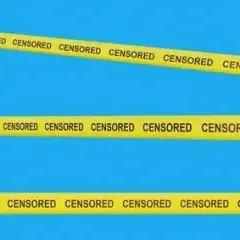
How would you rate the early Star Wars re-recordings?
Jurassic Shark posted a topic in JOHN WILLIAMS
Taking it one step further, inspired by this poll:- 58 replies
-
- Charles Gerhardt
- Varujan Kojian
-
(and 3 more)
Tagged with:
-
Admin note: This thread is largely hype for the release before it's release date, and then ordering/shipping/"it's arrived!" talk afterward; Please relocate to the following thread to discuss the actual musical content of the release: http://www.jwfan.com/forums/index.php?/topic/27984-close-encounters-of-the-third-kind-la-la-land-music-discussion/ News from someone in attendance at the CE3K 40th anniversary discussion panel
-
Inspired by a recent discussion in another thread. From that thread: Sabrina theme on the Sabrina OST. Confirmed by Gianmaria Caschetto JW performed on Images, according to @Thor. Which tracks? JW probably performed on the Theme from JFK on the JFK OST, according to @TownerFan. JW performed a bit of the piano solo part in Angela's Ashes, according to @TownerFan. Over The Moon on the E.T. OST. Is JW the performer on Theme from Schindler's List (Reprise)? What about the piano tracks on The Long Goodbye? What else is there?
-
Before I got to listen to this track in full (I had already seen the movie) I saw that people were underwhelmed and disappointed by this which in turn disappointed me because I thought this would be one of the most stand out tracks. However, when I listened to it boy was I wrong. From the moment the main theme of it started playing I fell in love with it, to me this is an instant classic that belongs up with the best of the Star Wars themes. It just perfectly characterizes the Rebellion in a grand militaristic way and the concert rendition at the end was even better. Seems like a bit of an inversion of the Imperial March yet it also feels like an extension of the Rebel Fanfare just... so good. Can't wait for a track analysis of this. P.S. The sound of the instruments in the main theme sounds so perfectly OT for this as well.



